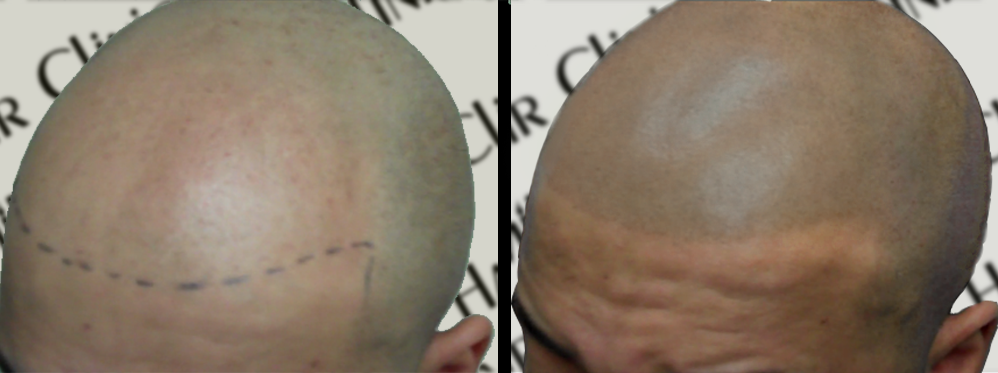Athletes deal with hair loss differently from the average person. Intense training sessions cause excessive sweating that clogs hair follicles and creates a breeding ground for bacteria. Tight helmets and headgear pull on the hairline repeatedly. Performance-enhancing hormones and extreme dieting strip away essential nutrients. Physical stress from competition triggers hormonal changes that accelerate thinning.
When you combine genetics with these athletic lifestyle factors, finding the right hair loss treatment for athletes becomes critical. Most traditional solutions cannot keep pace with an athlete’s demanding schedule and physical requirements.
Why Hair Transplants Fail Athletes?
Hair transplants get marketed as the permanent answer to balding. But surgery requires weeks of recovery time when you cannot train intensely or compete.
Sweating during the healing period can damage grafts and cause infections. Physical contact sports risk disturbing the surgical site. The transplanted follicles remain vulnerable to the same hormonal factors that caused the original hair loss.
Many athletes discover their transplant results look patchy within a few years as surrounding hair continues to thin. The procedure also leaves linear scars that become visible with short hairstyles. For someone who needs to perform at peak levels without extended breaks, hair transplants create more problems than they solve.
Understanding Scalp Micropigmentation as a Hair Loss Treatment for Athletes
Scalp micropigmentation uses specialized micro-needles to deposit medical-grade pigments into the scalp layer. These tiny dots replicate the appearance of natural follicles. The technique does not grow actual hair but creates a realistic illusion of density and fullness. For athletes seeking the best hair loss treatment, SMP delivers results without surgical risks or lengthy recovery periods.
Why Athletes Choose SMP Over Other Hair Loss Treatments?
Many athletes try supplements, special diets, and topical treatments, hoping to reverse hair loss naturally. These approaches rarely deliver visible restoration. Genetics and hormonal factors prove too powerful for vitamins alone to overcome. When natural methods fail, athletes need a reliable solution that actually works. Scalp micropigmentation delivers guaranteed results regardless of your hair loss cause or biology.
Athletes gravitate toward scalp micropigmentation because it fits their lifestyle perfectly. The procedure involves no incisions, no stitches, and no surgical wounds.
Most athletes return to light training within days rather than months. Results appear immediately after sessions complete, and they don’t need to wait for a year to see growth. The pigmentation withstands sweat, chlorine, and physical contact once healed.
Helmets and headgear cause no damage to SMP. Athletes can maintain their training schedules with minimal interruption. This makes scalp micropigmentation the most practical hair loss treatment for athletes who refuse to compromise their performance.
Can You Sweat After Scalp Micropigmentation?
This question concerns every athlete considering SMP. During the first four to seven days after each session, you must avoid excessive sweating to allow the pigment to settle properly. After this brief healing window, sweating causes zero damage to your scalp micropigmentation. Athletes resume intense workouts, compete under stadium lights, and train in any conditions without affecting their SMP results. The pigmentation stays locked beneath the skin surface, where sweat cannot reach it.
How Long Does Scalp Micropigmentation Last for Athletes?
Properly executed scalp micropigmentation typically lasts three to five years before requiring a touch-up. Sun exposure, natural skin cell turnover, and individual skin chemistry determine fading rates.
Athletes who spend significant time outdoors may notice slightly faster fading. A simple maintenance session every few years restores the original appearance. This longevity makes SMP a cost-effective hair loss treatment for athletes compared to monthly medications or repeated surgeries.
Does Scalp Micropigmentation Hurt?
Pain levels during SMP remain minimal. Most athletes describe the sensation as light scratching or tingling on the scalp. The discomfort falls far below what you experience during a hair transplant surgery. Numbing agents can reduce sensation further if needed. Athletes accustomed to physical training find the process quite tolerable.
Scalp micropigmentation is becoming more popular, and this has drawn in people who aren’t properly trained. Many tattoo artists now claim they can do SMP in Arizona, but the process is very different from regular tattooing. Using the wrong pigments, going too deep, or lacking skill can leave results that look fake, especially under bright lights.
This can cause blotchy spots or unnatural patterns that are hard and costly to fix. Athletes should always choose a certified SMP specialist with real training and a strong portfolio of work. Picking the wrong scalp artist in Arizona can damage your look for good, while the right one gives you natural, lasting results that hold up in every training situation.
SMP professionals at DermiMatch are truly experts in scalp micropigmentation in Arizona and can help solve your problem. Find the right scalp artist now.

